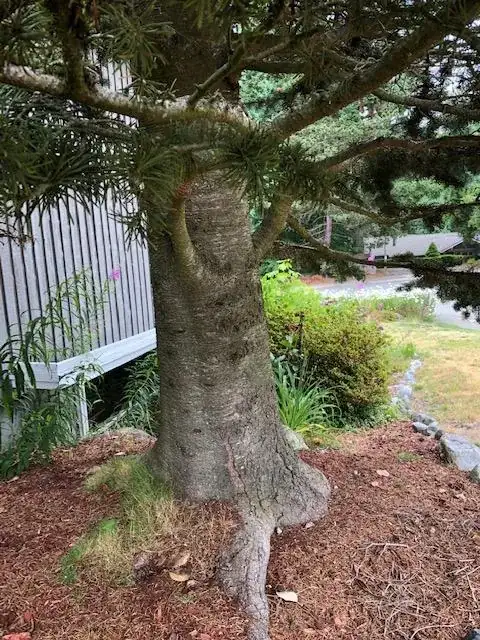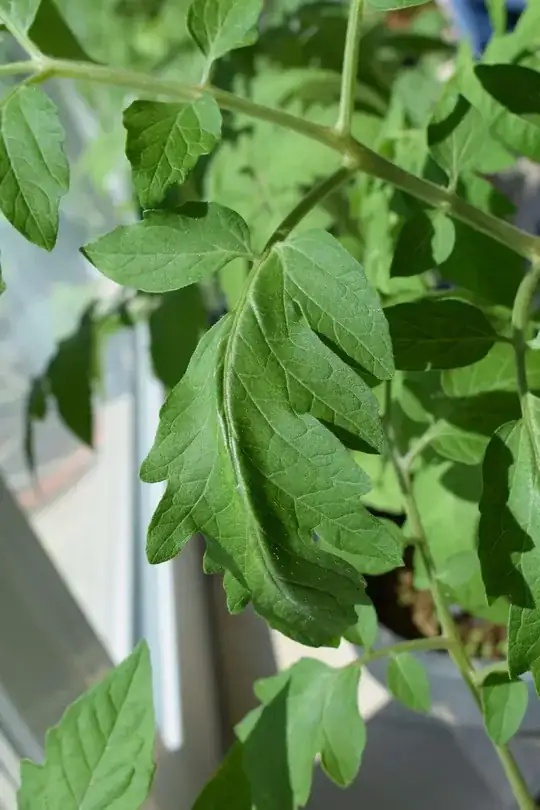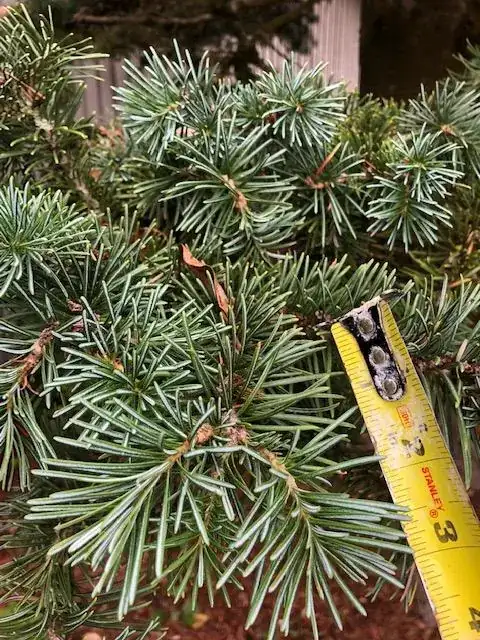To answer your question 2:
This tree will most likely drop needles and pine cones.
You ask two questions and imply a third by your comment...
We were debating whether to keep it (if it is nice and valuable) or
cut it down.
Allow me to focus most of my answer on your final comment.
A tree's value is perhaps similar to beauty - it is in the eye of the beholder.
What is nice and valuable to one person may not be to another...
For example, you might tolerate pine needles in the garden bed beneath the tree, whereas your neighbour might dislike needles falling on their roof and gutter or onto their paths.
For example, this tree when fully mature may pose a significant risk of fire or damage to the residential homes around it and therefore become too great a risk to leave in the ground.
Both these examples are for consideration only - hopefully neither apply to your situation.
I'll provide a few PROS and CONS for pine needles and cones.
PROS of pine needles and cones...
- needles are a naturally falling mulch for the soil around the tree, that requires no work on your part;
- and so the needles suppress weeds and conserve soil moisture;
- as they break down (organically), needles create an acidic soil that is perfect for growing blueberries and flowering shrubs from the rhododendron family (camellia, azalea, etc) (all of which tolerate shade);
- needles gives off a pleasant aroma;
- cones are an excellent source of firewood.
CONS of pine needles...
- needles as a mulch can be messy, easily spilling over the edges of garden beds onto paths and driveways;
- needles are difficult to collect / clean up;
- cones hurt if they fall on your head.
In my humble experience, all the CONS can be managed by sensible placement and construction of garden beds and pathways.
So my recommendation is that you consider the option to keep the tree and use the money you save from not cutting down the tree for some landscaping work, suggestions as follows.
- Slightly elevated pathway or garden edge, laid in a semi-circular pattern well beyond the base circumference of the tree, to ensure most needles remain beneath the tree and do no migrate onto the lawn or surrounding garden beds;
- If pathway, build this from large paving stones or concrete, with gaps in between short sections of the pathway (every 2-3 feet), to allow needles to naturally fall off or be blown or brushed off the path surface;
- Purchase some new acid loving plants for this garden bed - blueberry bushes around the edge, with azalea, camellia and/or rhododendron the next row back.
Note that all these suggestions will require an understanding of your local environment and the soil on your property and so I would recommend you discuss these suggestions with a qualified gardener or landscape contractor who works in and is familiar with your area.



